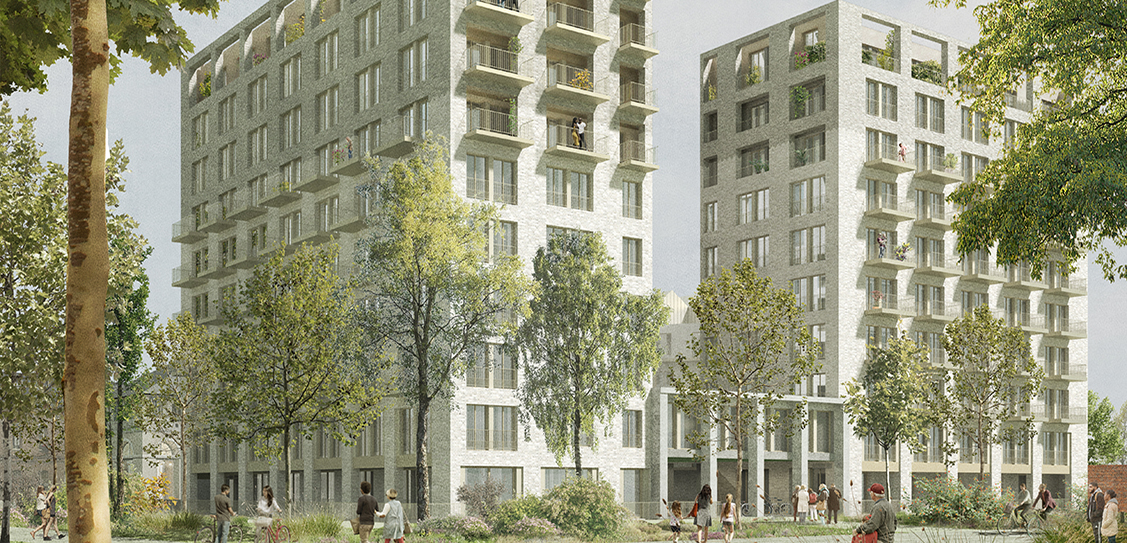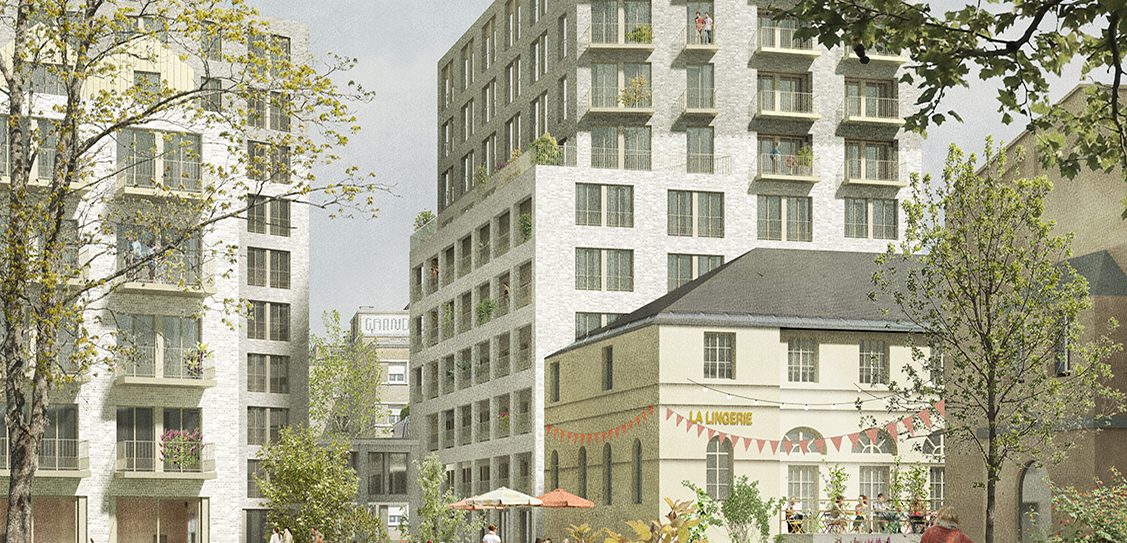The Saint-Vincent-de-Paul site is a densely planted area of 3.4 hectares, surrounded by high walls, originally occupied by a convent which was later repurposed as a hospital of the same name. The transformation of this secluded enclave into a fully integrated part of the city will be in collaboration with Nantes-based Bourbouze & Graindorge and will be a unique opportunity to create a green, peaceful new neighbourhood that will enhance the urban fabric. In the new masterplan, contemporary and historical architecture coexist within a garden landscape in an urban environment where multiple uses and spatial proximity create a myriad of opportunities for social interaction and to celebrate the pleasures of urban life.
Public space plays a crucial role in the project, which is organised around the two original orthogonal routes that crossed the former hospital intersecting at the centre of the site.
Approximately 60% of the overall floor area of 60,875m² will be achieved by the reuse of existing buildings, with housing accounting for two-thirds of the programme. 7,500m² have been earmarked for businesses and production activities, including innovative and social enterprises, while the 1934 Pinard building will be converted into an educational complex including a crèche, a school and sports facilities.
As a counterpoint to the renovation of a number of the existing buildings, the more obsolete structures will be demolished and rebuilt. Among these is the Chaufferie, one of the four ‘islands’ that make up the new quarter, which Sergison Bates architects and Bourbouze & Graindorge have designed.
Rather than a finished, static proposal, the project team developed an active place making strategy, breaking up the programme set out in the brief into three main buildings which, together with the existing old laundry building form an ensemble that will provide 100 affordable and 81 subsidised apartments, approximately 9,000m² in total, and 1,500m² of light industrial workspace, together with a range of commercial uses, including a café.
The project focuses on the space between buildings as much as on the buildings themselves, covered canopies organise access to the halls, common spaces and bicycle parking, and the continuity of the “common ground” is reinforced by the buildings’ chamfered edges, which create generous, open public spaces.
The project is permeable at ground level, the main north-south circulation axis allows pedestrians to move through the project from Avenue Denfert-Rochereau to the North of the site via generous porticoes and loggias, while a secondary route connects the central courtyard to the old laundry building and the perimeter pathway.
The robust structural facade with its repeated openings, the central core and perimeter rooms make the building flexible and adaptable, interior layout can vary on different floors and adapt to changing social, economic or functional needs over time.
On the lower ground of the buildings work spaces naturally lit by the so called “cours Anglaises” invite cultural, creative and productive uses. The mixture of close proximity uses determines the character of the relationship between the buildings and public spaces and potentially makes for a diverse and vibrant environment.
The buildings’ architecture is respectful of the site’s heritage, with brick being the primary facade material. Detailed as a load bearing protective skin in 220mm thickness, it will incorporate bonding details and different brick types that emphasise the textile like character of the wall.
At the heart of the site, the Grands Voisins initiative has developed a community programme that brings together a number of associations and different groups of people. This social and urban dynamic is the focus of the wider project for transforming the site and will be at the heart of the consultation process.

